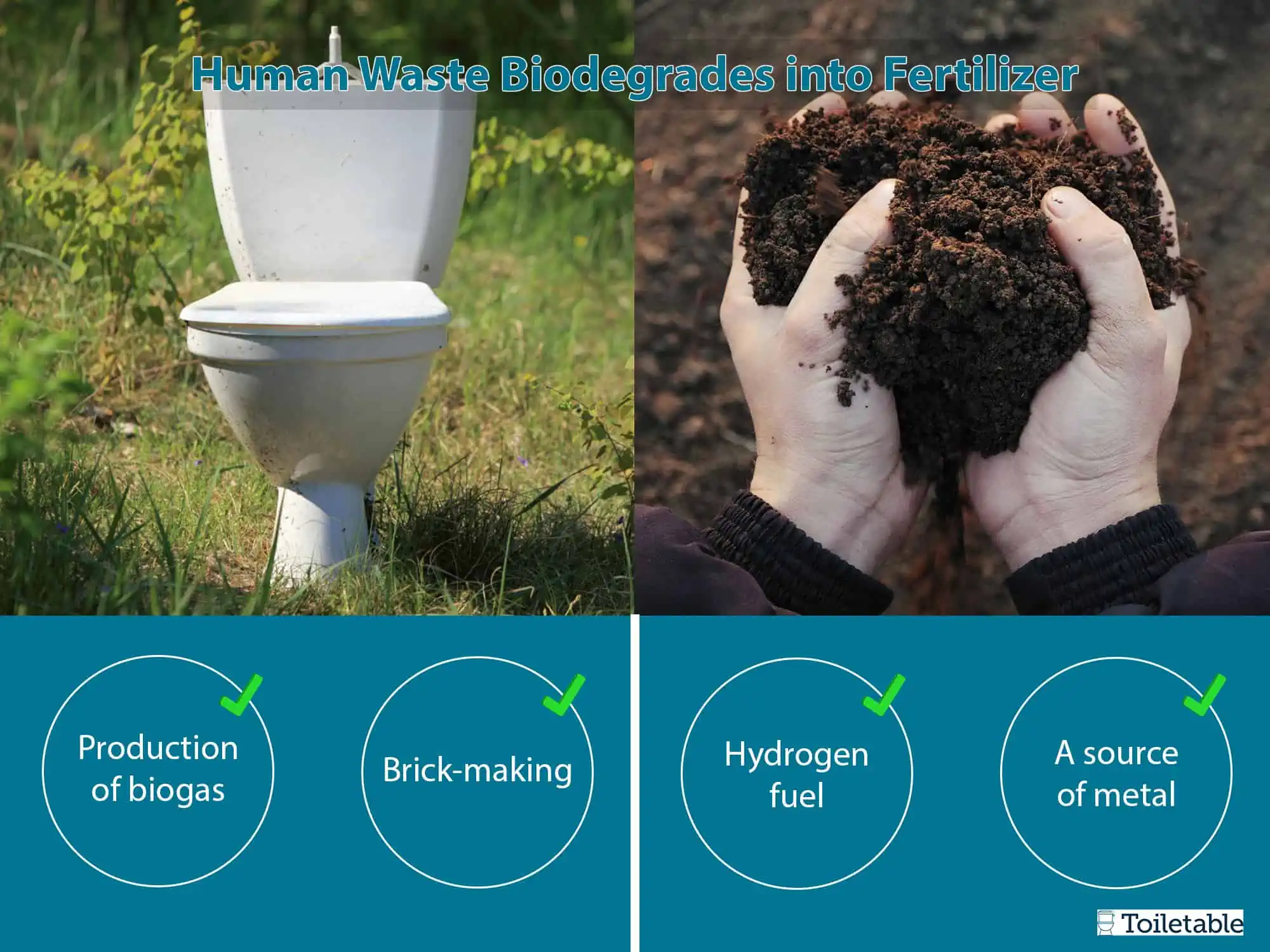Did you know that the average human produces about a pound of poop per day? Wouldn’t it be great if that could be used to help the environment? The good news is that it can.
Read this guide about the waste breakdown process into fertilizer.
Breakdown Process of Waste

According to many other resources, there are different ways in which we can reuse human waste; for fertilizer, production of biogas, fecal transplant (used in some medical procedures), brick-making, hydrogen fuel, a source of metal ($13 million worth of metals can be extracted from the feces of one million Americans), and as a source of water.
Human waste is biodegradable and could take a few days up to a year or more to compose, depending on several factors.
Our body is designed to naturally break down our consumed foods into waste, but then we need another step to break down the waste.
3 Stages of Sewage Treatment
The commercial process of decomposing human waste is called “sewage treatment”.

According to the New York City Department of Environmental Protection, there are 3 stages of sewage treatment, and the process has been successfully used for 103 years.
This procedure was replicated from nature where microorganisms help clean rivers, streams, and other bodies of water. Some materials are needed, but essentially it’s just nature taking its course.
First Phase
First, the sewage system collects the waste, the fecal matter settles to the bottom and the water on the top is skimmed off. Once the matter is isolated, then it is ready for decomposition.
Second Phase
The second phase, which involves billions of bacteria and fungi. These microorganisms work endlessly by feeding off nitrogen and phosphorus that are already present in the fecal matter. This breaks down the waste and prepares it for the next phase.
These anaerobic bacteria are particularly important because if they do not break down the material, the waste can be susceptible to extreme algae overgrowth causing toxic reaction and creating harsh chemicals like ammonia.
The waste is then put into a second tank containing high temperatures of at least 95 degrees fahrenheit and very low amounts of oxygen. These are perfect conditions for the anaerobic bacteria to continue breaking it down.
The most important part of this second phase is the extreme temperatures that help kill bacteria that we do not want seeping into our water or soil supply.
All harmful bacterias are killed in this phase, but the ones needed for decomposition stay in tact. These bacteria organisms work naturally, as their existence is designed to feed off waste and decompose it.
The remaining matter is now further broken down into water, carbon dioxide, and methane. This is the phase where the waste can be used for fuel.
Final Phase
The last phase uses this watery substance in the final process which requires drying it out. A large container is used as the matter spins vigorously and eliminates most of the water through a spinning motion, similar to a washing machine.
The remains of this last phase are called biosolids, which are used as fertilizer. Plants love human compost because it provides them with essential nutrients.
Uses of Biodegraded Waste
It is advised to only use this compost for flowers and not agriculture. Other beneficial farming uses of biosolids include reducing erosion and helping build soil structure.

Mass decomposing of human waste is generally left to the larger corporations. Most home human waste compost systems are rarely approved by the government, due to important fact that harmful bacterias must be destroyed in order for waste water to be safe for waterways and other uses.
However, if you would like to become more environmentally friendly and efficient, you can help the process. Some people choose to use their own waste to fertilize their gardens. This process is not as intricate and includes these steps.
- Break up waste to small portions
- Mix with other bio-organic materials such as leaves, twigs, grass, hay, or coffee grounds
- Make sure it is piled loosely so there is enough oxygen
- Earthworms may be added to help speed up decomposition.
Toilets and Decomposing Waste
Note: Household toilets do not have the capacity to help decompose waste matter.
However, some chemicals that can aid in this process are; bleach, detergent, caustic soda (sodium hydroxide), and certain enzymes. Boiling hot water also helps break it down in the toilet. Chemical tanks are used in place of other toilets where running water is not accessible. Port-o-potties, RVs, and airplanes are some examples of uses of chemical tanks. These tanks contain chemicals that assist in the process of breaking down the waste for safe disposal or reusable purposes.
Our Final Opinion
Who knew that human waste was so useful? Whether you have an old septic system, a chemical tank, or regular plumbing, it is so great to know that our waste does not go to waste.
